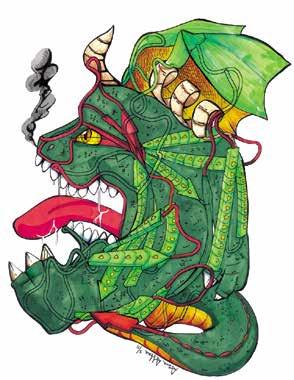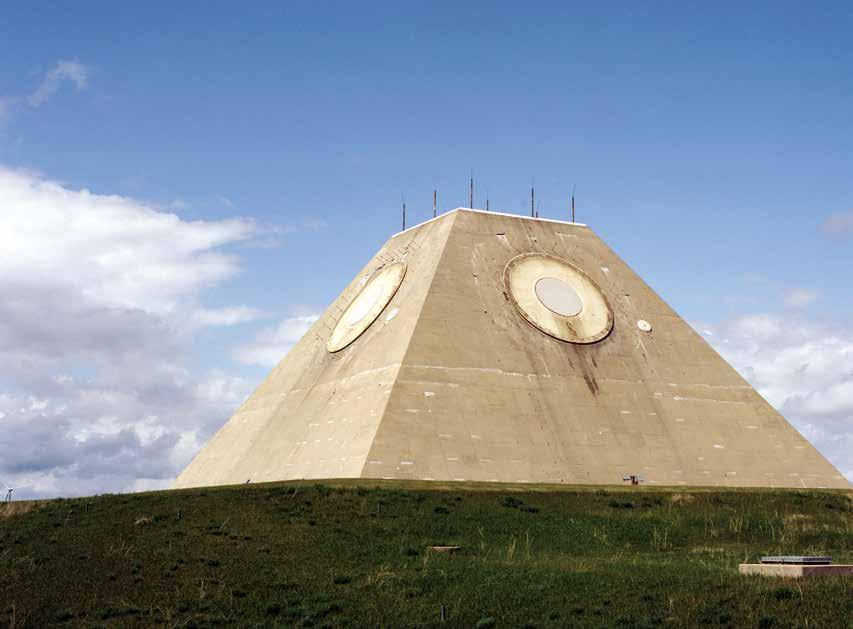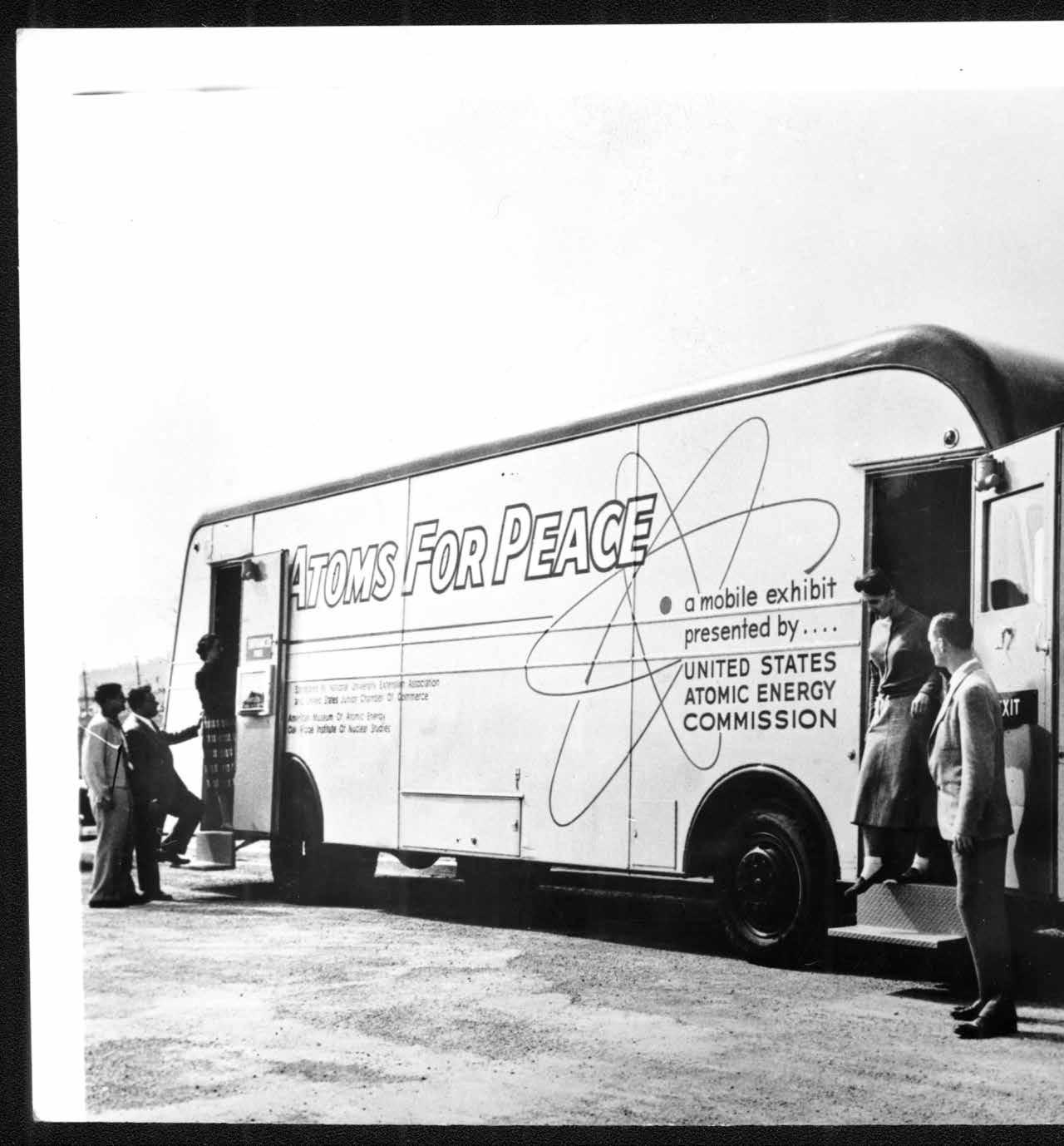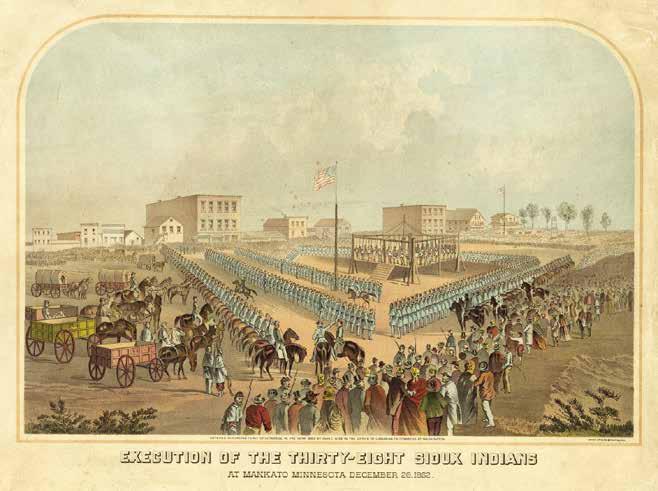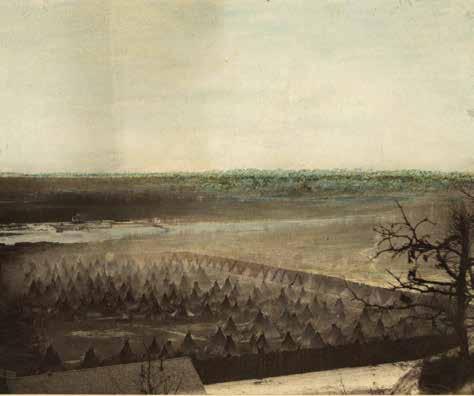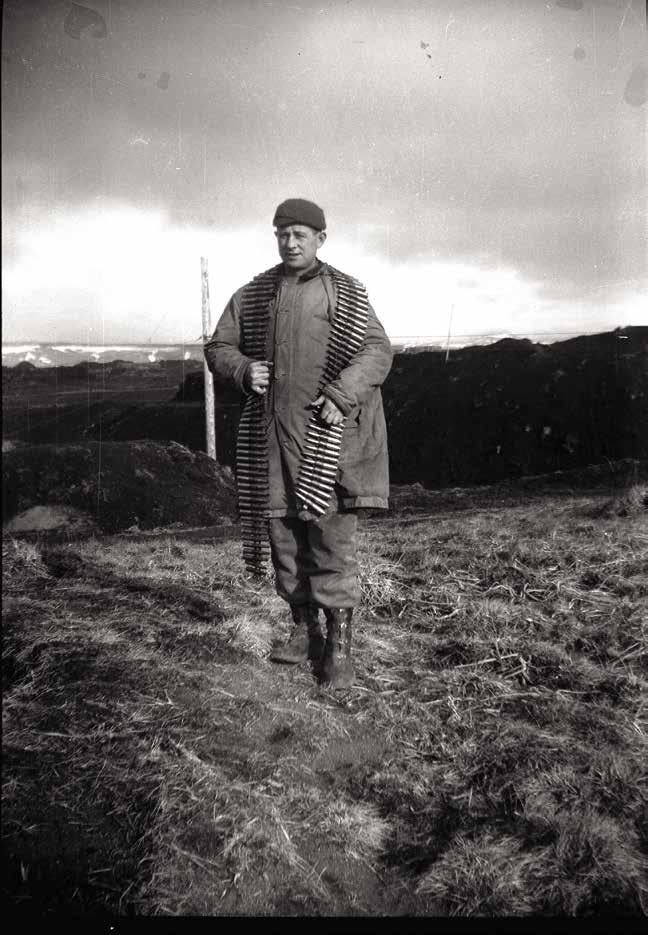
9 minute read
The Power to Outlive Stone
By Karen Herzog
Until recent years, I knew nothing about Beriah or Ebenezer Magoffin except their exotic names, which would be perfectly at home in a Dickens story. And I knew the name only because, in the way of children,I occasionally overheard grownups use it. Perhaps it stuck in my memory because it was so unlike the familiar German surnames around me, or maybe because to a child it sounded like “McCoffin.” Among the second- and third-generation immigrant Germans of that time and culture, not much was explained to children. Grownups talked to each other and children overheard and interpreted as best they could.Children, it was assumed, would be told what they needed to know and no more. It must have been years before I put bits and pieces of overheard grownup conversations together to glean that my dad, John Rempfer, along with my dad’s youngest brother, Jake, had operated “McCoffin’s” store in Monango after Ebenezer Magoffin retired. They never renamed it“Rempfer’s,” that I know of. It had been Magoffin’s for nearly 60 years and so it remained.
Advertisement
My father had gone to business school in Fargo in the 1930s, where he acquired the beautiful script that makes old ledgers and records into calligraphic art. After he finished school in 1935, he started working in the store for Eb Magoffin. But by 1939, the first dislocating quakes signaling the approach of war scattered young men to places far from home. “Johnny,” as my mother and his family called him, served in the Aleutians and then the Philippines. Jake was a radioman, flying “the Hump” in Burma. Johnny came home severely sick with malaria, acutely ill for nearly a year. But in 1946, Johnny and Jake bought Magoffin’s store and ran the business together. Two years later, in February 1948, the store burned to the ground. Two months later, in April, Johnny’s wife, Erna, gave birth to a baby girl. Me. So I never saw Magoffin’s, except in photos, unless maybe I sensed something of it in utero.

The author’s dad, John Rempfer, with cartridge bandolier, the Aleutians, 1943. Courtesy of Mike Rempfer.
When I was growing up on my grandparents’ homestead about six miles northwest of Monango, Magoffin’s remained just a rectangular depression along Main Street between Skinny’s Bar and an old white brick building that has been, among its various incarnations, a grocery store, a lunch counter and a post office, back when Monango still had its own 58471 ZIP code.
The sunken lot meant little to me, since on any trip to town I was mostly intent on the possibility of wheedling maybe a red popsicle or a roll of Lifesavers from Mom. I was rarely successful, since Mom saw sugar as the mortal enemy of little children’s teeth, but I always made a valiant try. Where Magoffin’s once stood, where my dad and Uncle Jake conducted store business before I was born, was just an empty spot along Main. That is, until as an adult, I became a beneficiary of the genealogical sleuthing of Jake’s son, my cousin, Mike. He has become the family’s, and in some ways, our community’s historian, patiently seeking out archives and photos and old newspaper articles, interviewing people and translating letters.
Somehow, those pieces of history began to arrange themselves into a bigger picture in my mind and it dawned on me that my ordinary little town, that little spot in the road where highway drivers barely bothered to slow to forty mph, held something quite wonderful. Here, a piece of the big, extravagant, tragic, poignant history of America (and the world) is woven into that tiny town through the people who waited the counters at Magoffin’s Store.

The author’s uncle, Jake Rempfer, in India (1943-44). Courtesy of Mike Rempfer.
Dickey County, created in 1881 from pieces of LaMoure and Ransom Counties plus “Unorganized Territory,” had only been a Dakota Territory county for three years when Beriah Magoffin arrived there in the spring of 1884. Monango’s 1984 centennial history book, Banner City, honors Beriah Magoffin among the founders of that little town on Highway 281 about sixty miles south of Jamestown. Beriah, with a name and face like an Old Testament patriarch or a Kentucky colonel, surely brought with him his Kentucky accent, along with his personal scars from the Civil War.
The flood of German-Russians who came to farm Dickey County, among others in southcentral and southeastern North Dakota in the next two decades, had missed the Civil War, America’s great agony, by about three decades. Beriah Magoffin had been in the thick of it. Did the new immigrants know that? I wonder. The first-generation immigrants spoke mostly German, and whole families, from children to grandparents, were too preoccupied with fiercely excavating a foothold on the prairie for the luxury of inquiring about a man’s private past. They must have bought their necessities from his mercantile store, everything from shoes to groceries to hardware. But developing a relationship, outside of strictly business, seems unlikely.
If there was a moment when Eb Magoffin turned over the keys to his grocery story to Johnny and Jake Rempfer in 1946, it’s also unlikely that any of them stopped then to reflect that it was Abraham Lincoln who had made that moment possible.
Without the Homestead Act of 1862, which opened up the free land that must have seemed like the only hope of survival to the Germans who fled Russia, would Johnny and Jake have been born on the North Dakota prairies? Would their father have come alone, age nineteen, across Europe? Would he have stayed in Russia instead? Been dragooned into the Russian Army? Starved to death, been shot, sent to Siberia like almost all those who remained? Would his fourteen children ever have been born? When, tasting in the air some downwind scent of persecutions to come, Stalin’s executions and evictions, his starvation policies and his gulags, some animal instinct for survival drove many Germans from their comfortable villages and vineyards along the Black Sea. Where might they have gone if not to the hot, treeless, fertile, windswept, blizzard-beset sanctuary that Lincoln’s signature on the Homestead Act had opened for them?
Beriah Magoffin also arrived courtesy of Lincoln, in a way. Magoffin had fought for the Confederacy. Banner City tells Magoffin’s story, which seems worthy of a Spielberg epic, quite matter-of-factly: Beriah Magoffin was the nephew and namesake of another Beriah Magoffin, who was governor of Kentucky from 1859 to 1862. Magoffin’s uncle Beriah had personally sent a telegram to Lincoln, who had called for troops to fight the South, stating: “I will send not a man nor a dollar for the wicked purpose of subduing my sister southern states.”
Monango’s Beriah Magoffin was born in 1843 to Ebenezer and Mary Magoffin, who owned a plantation in Missouri along with a large number of slaves. Beriah’s father, in fact, raised a regiment on his farm to fight for the Confederacy. Meanwhile, in 1860, according to the Monango history book, Beriah had run away from school and headed across the plains with an ox team, “serving as assistant wagon master, freighting smelting machinery to Pikes Peak, CO. He rode at the rear of a train of 40 wagons of six ox teams each.”
When war was declared, Beriah came back and enlisted in the 10th Missouri, Parson’s Brigade. In 1862, he was shot through the leg and taken prisoner, held in Alton, Illinois. With a number of others, he tunneled his way out and within eleven days had rejoined his company. “About a year later,” according to Banner City, “… in an attack on a fort, Beriah was near where a shell struck and reported among the dead. He was only stunned, however, and, when he finally regained consciousness, his company had disappeared.” Magoffin was recaptured and returned to Alton and from there was sent to Fort Delaware.
“After several months there,” the history reads, “an order was received to exchange 700 disabled men with the South. Not being able to qualify as disabled, he took nicotine from a pipe and smeared over an eczema on his face; it created so much trouble that the doctors passed him with only a glance. He was sent to St. Louis, but never fully recovered from the effects of the nicotine.”

Postcard from early 1900s of Ebenezer Magoffin’s store. Courtesy of Karen Herzog.
At war’s end, Magoffin returned to Missouri to farm part of his former family homestead, and in 1866, married the daughter of a former lieutenant governor of Kentucky. Three of their five children died in infancy; only two survived, a son, Ebenezer, and a daughter, Emma. History says that, after farming for ten years, he came to North Dakota and filed on a claim and ran a mail route.
In 1886, he arrived at what would become the Monango townsite ahead of the Milwaukee Railroad and “built a shack for himself with a room for his horses,” Monango’s first building. Beriah and Ebenezer hauled timbers for the railroad culverts along the line being built from Ellendale to Edgeley. President Grover Cleveland appointed him postmaster of Monango in 1886, where he served until 1888. In 1889, he and Ebenezer began the mercantile business that stood on Monango’s Main Street.
Beriah Magoffin died in 1924 and is buried in the Monango city cemetery just west of town. His son, Eb, continued to run the mercantile until he retired in 1946. He died in 1953 and is also buried in the Monango city cemetery. And so Magoffin’s section of the centennial history concludes.
And the epilogue is this: In March of 1952, Johnny Rempfer died of cancer and is buried west of Monango in St. Paul’s Lutheran Cemetery. Jake is buried there as well.
The past makes the strangest bedfellows of people. Rather, history makes of disparate men the unlikeliest of brothers. Two sons of immigrants from New Beresina on the Eurasian steppe, and father and son from Ireland via the Old Confederacy, all sweeping the same floors and stocking the same shelves and supplying the same goods, making a life and a living, each answering to their own generation’s call to war. As Beriah had fought in Missouri for the South to be allowed to secede from the Union, Johnny and Jake Rempfer served in World War II for the Union that Lincoln preserved.
They came from places vastly apart to meet at the same little piece of the prairie along Highway 281. And now the prairie holds all of them.
The Monango city cemetery, where Beriah and Ebenezer are buried, is far from Missouri, just as St. Paul’s Lutheran cemetery, where Johnny and Jake are buried, is far from the Black Sea. Perhaps a mile divides them as the crow flies. The dirt road to the city cemetery parallels the old railroad bed for which the Magoffins first hauled the timbers. The gravel road past the church cemetery heads due west to the glacial moraine where Whitestone Hill stands. The store where their lives intersected is gone. The men themselves have gone, leaving just names carved in granite and descendants to remember them.
But if we know anything about humankind that is hopeful, it’s that stories have the power to outlive stone.
Karen Herzog is a fourth-generation North Dakotan who grew up on the family farm in Dickey County and still owns the land which her grandparents homesteaded there. She is a graduate of Jamestown College and has worked as a reporter and columnist for the Bismarck Tribune since 1994. Herzog lives in Mandan and has three grown children.


